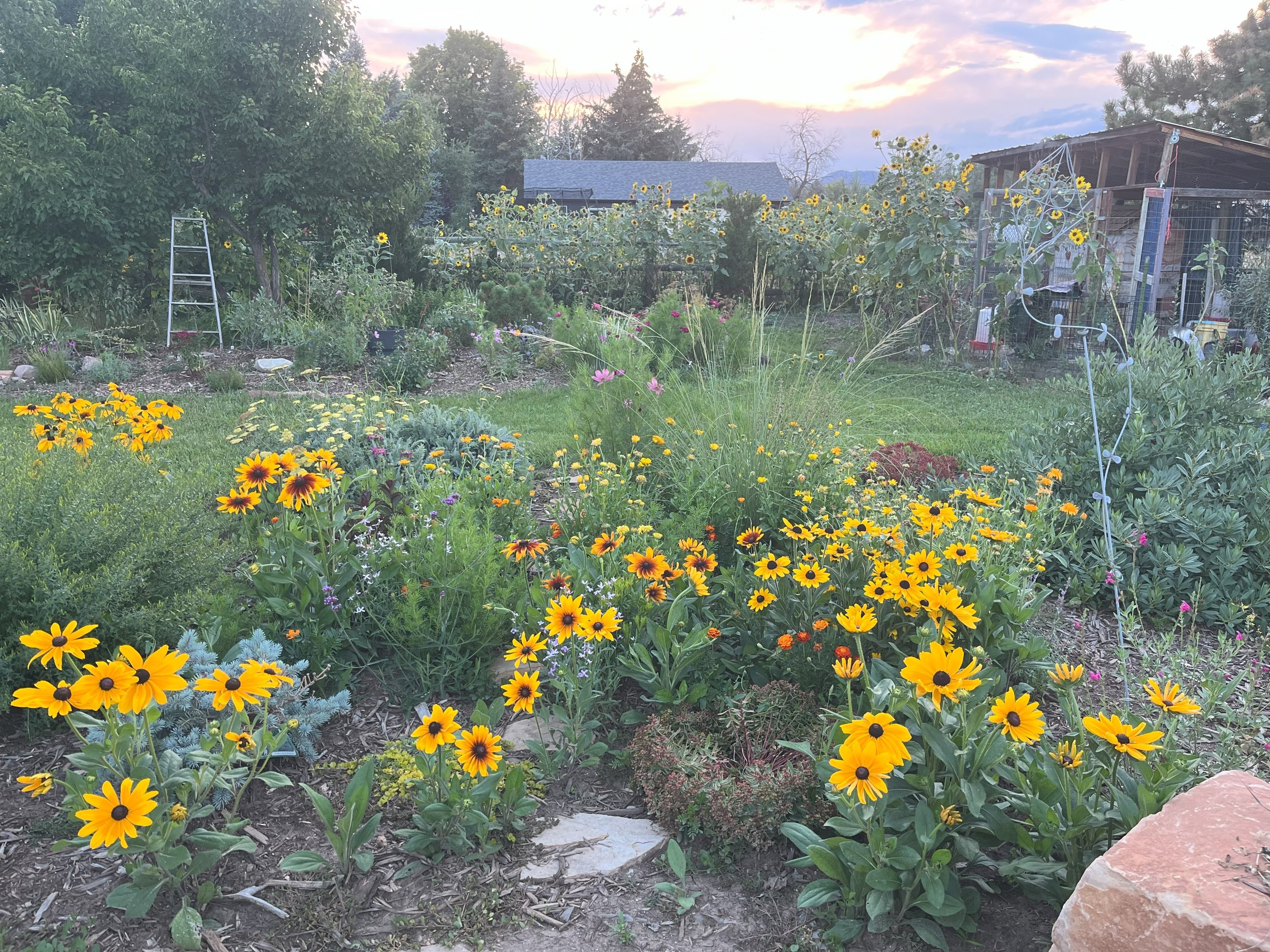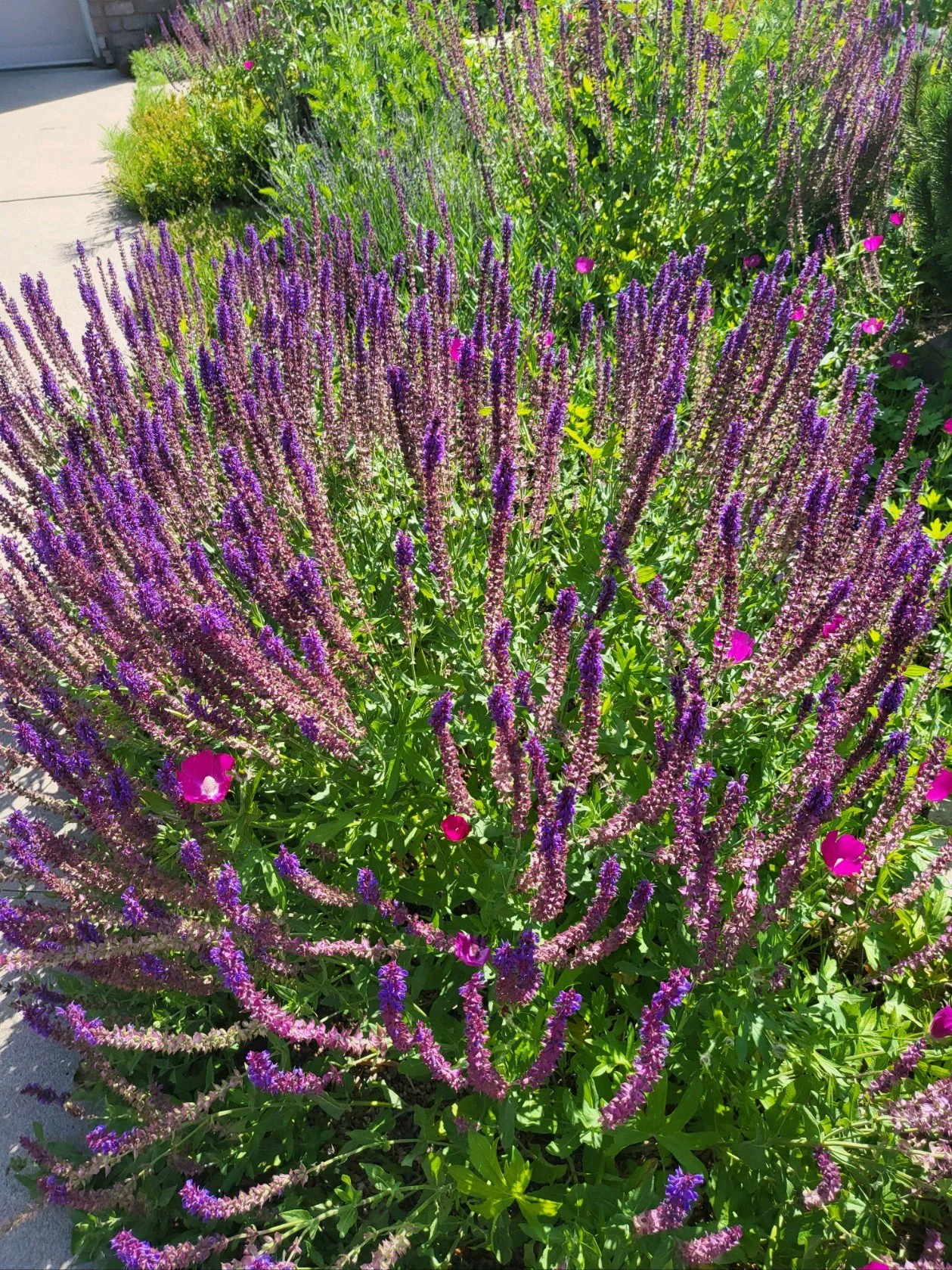Pollinator Plants
To attract pollinators: offer nectar, pollen, nesting sites and host plants.
Plant diverse flowers for all seasons, group same species, create sunny areas, avoid pesticides and leave some bare soil for ground-nesting bees.
Hummingbird taking a bath in the sprinkler
Many butterflies and native flowering plants have co-evolved over time and depend on each other for survival and reproduction.
Choose butterfly-friendly plants in varying colors and flat-topped or clustered blossoms with short flower tubes. Ensure good nectar sources in full sun for continuous bloom throughout the adult butterfly life span.
When you make a garden to attract pollinators, you can get it certified by the National Wildlife Federation. Click on pollinator garden certification for more information.
Over 70 butterflies and moths need native grasses to grow and develop.
Grasses help the environment by providing food and shelter for pollinators, birds, and small animals. Pollinators need protection from harsh weather and predators, as well as places to nest and rest. Planting different flowers and grasses in an area helps pollinators find the food and shelter they need. They use these plants as safe pathways to move around and steer clear of predators.
Sphinx moths use a wide variety of host plants for their larvae, including both woody and nonwoody plants.
Each moth species has its own suitable host plants.
Adult sphinx moths, known for their long tongues, feed on nectar from long-throated flowers.
They hover like hummingbirds while feeding and are important pollinators, taking nectar at different times of day or night, often at dusk or dawn.
Schedule Your Appointment
jenny@freshbloomsdesign.com
(970)631-7520









